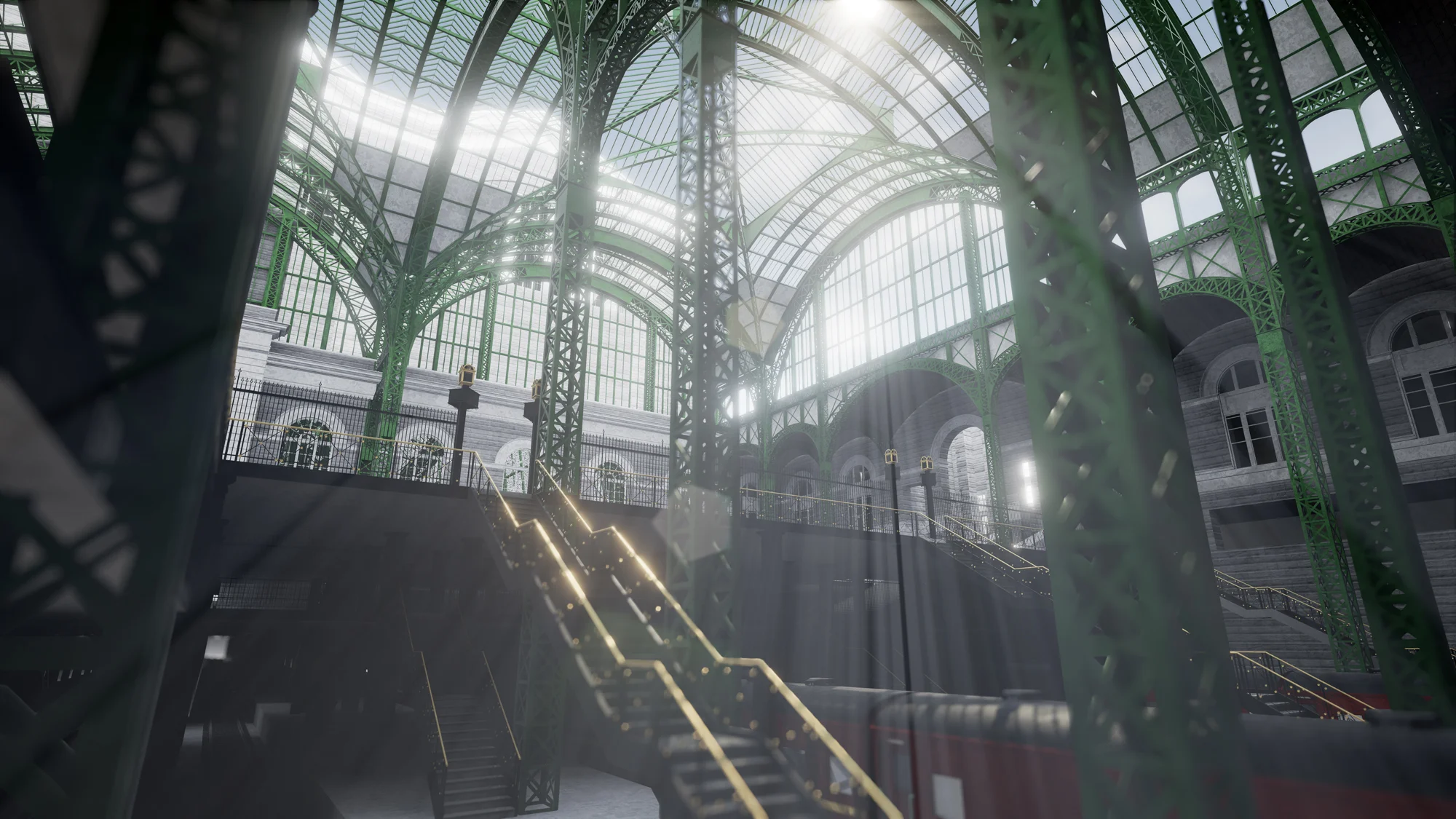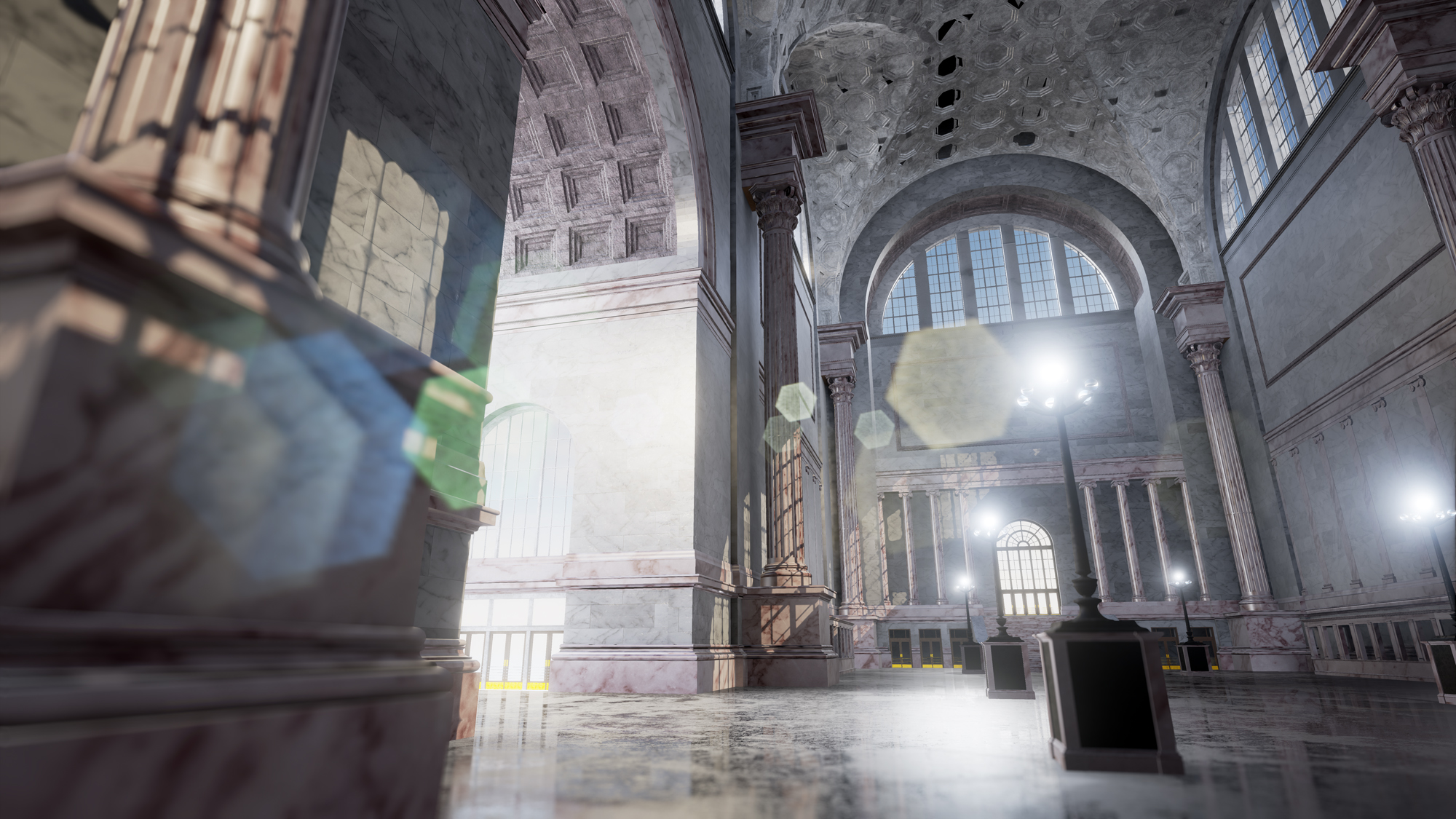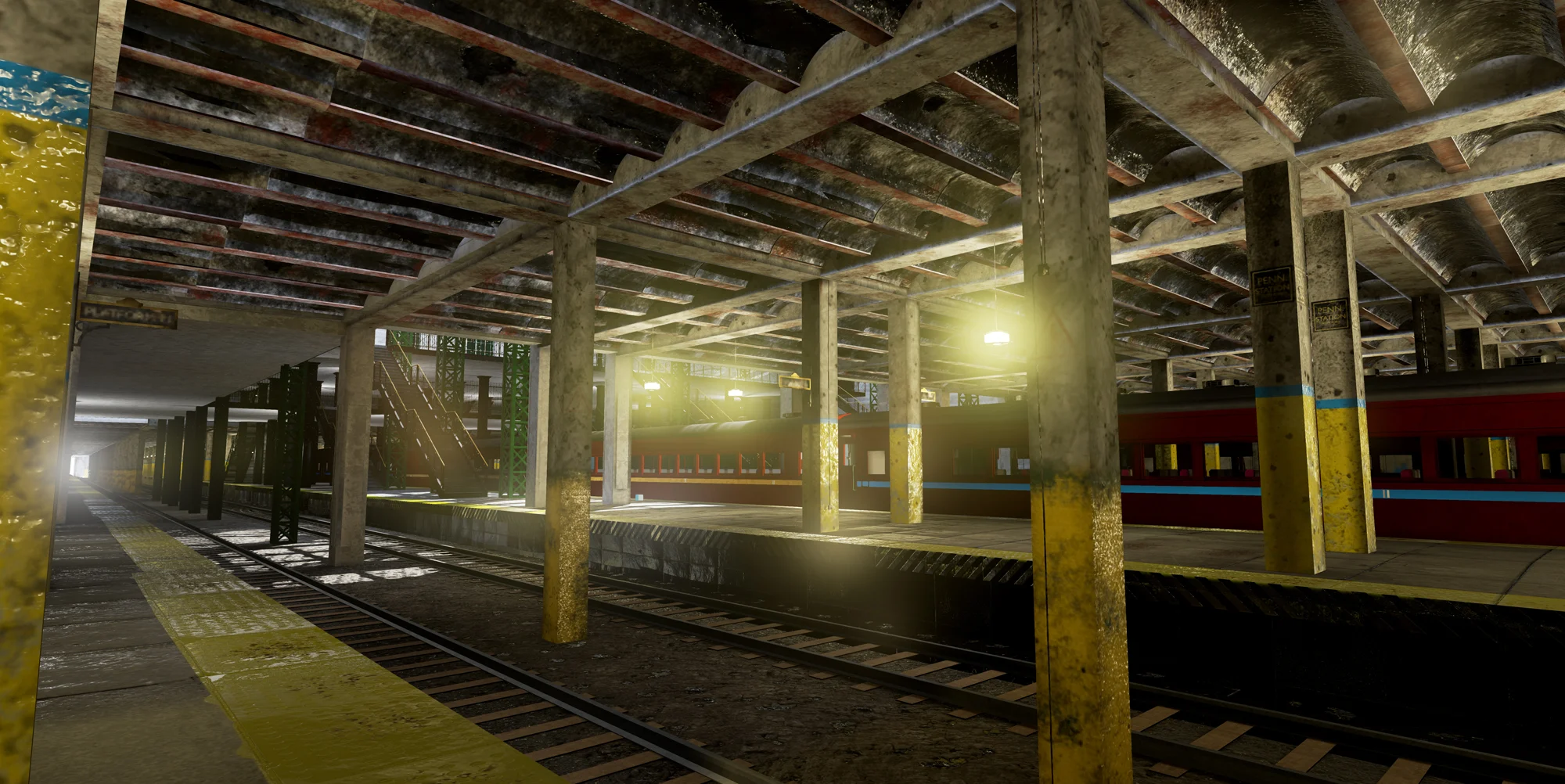Place and Memory
Exploring architectural achievement and loss as a product and influence on society and culture with New York Penn Station as an example.
Directed and Designed by William B. Roller
This is also a virtual reality project for the HTC Vive. Using a headset, it is possible to walk around and explore this set.
The original New York Penn Station by the architecture firm McKim, Mead, and White was designed and built between 1903 and 1910 and was a significant undertaking at the time of its construction. It was not only an architectural innovation in terms of scale and structure, but also an engineering and infrastructural achievement. It linked the major American railroad network directly to Manhattan, New York and New England through the construction of tunnels under the Hudson River and East River. This eliminated the need for passengers travelling to New York to stop in New Jersey, transfer themselves and their luggage to a ferry, and disembark in Manhattan. The infrastructure remains vital to this day.
The station could be regarded as a gift to New Yorkers and visitors alike. Its sprawling glass and steel shed over the concourse provided ample space to handle the traffic without crowding and allowed natural light to penetrate all the way down to the arriving trains, about 50ft. below ground. The adjacent waiting rooms and ticketing hall were enormous in scale, nearly the size of a football field, with ceilings up to about 150ft. high to accommodate the high volume of people coming through the station. A taxiway was built along the perimeter to allow cars and busses to pick up and drop off passengers at the concourse level, only steps away from the trains. The spaces together are a symbol of how architectural and engineering ingenuity can treat the public with dignity.
In many ways, its original design was a civic gift, not intended to be a capitalistic venture or to make money. This is evident in the modest provisions for commercial space in the station, separated from the trains by a considerable distance. It's a sharp contrast to many airports and other stations--even the new PATH Station in the Financial District, despite it's use of natural light, large, sprawling spaces, and distinctive aesthetic--which are sometimes indistinguishable from mundane shopping malls.
The societal and political shift of focus away from maintaining and improving transportation infrastructure in the interest of the public sealed the fate of Penn Station (and an almost innumerable number of other places, nearly including the nearby Grand Central Terminal) and it was unceremoniously closed and destroyed between 1963 and 1965. The postwar cultural and political mindset shifted to earning money and accumulating personal wealth (everyone owning a car, a house in the suburbs, land, and material goods individually), and no longer included intensive planning and building for the public collectively. Penn Station remains in its location, but underground. Large concourses and waiting rooms have been replaced by narrow, low corridors that are consistently crowded. It is by far the busiest transportation facility in America including airports, with statistics indicating around 600,000 passengers per day (at some times of day, 1,000 people every minute), but its spaces feel as though they can scarcely handle that capacity. It is dark, unintuitive, uninviting.
Many argue that maintaining a railroad network and its associated civic architecture in a country like the US is unrealistic because of how large it is. But one has to remember that until the 1940s, that was exactly the case. Hardly any town and not a single city was without railroad transport. Even the town where I lived in rural Missouri (with a current population of about 10,000) saw numerous departures every day until the late 1950s. Moreover, our government spends billions of public dollars every year maintaining roads and interstates and airlines, so it is feasible to do this for railroad, as well.
Others argue that it's slow, uncomfortable, or otherwise unpleasant. Well, it doesn't have to be. Trains in France, Japan, and even China achieve speeds of over 350mph. The technology already exists, and those speeds will only improve. And granted, while even at their highest speeds, for now, they go only a bit over half as fast as an airliner. But the advantages of being delivered directly to your destination, never having to wait in line, undress, unpack and otherwise indignify yourself for the TSA, and bringing practically as much luggage as you want along are things that an airline will never be able to accomplish. On a train, one has the freedom to get up, walk around, take in a meal, see the country, meet other people (and move to another seat if you're next to the screaming infant).
Environmentally speaking, there is no comparison to the advantages offered by rail. Trains already run on electricity--their emissions are a small fraction of what a car or airliner produces. This is further compounded by the economy of scale that a train offers as they can transport many more people than other means.
Sadly, however, this is not the reality in the US. Penn Station's fate stands as a symbol of our lack of motivation as a society to create good things in the interest of the public. We only reap what we sow, and we can only enjoy the memory of things that once were.














